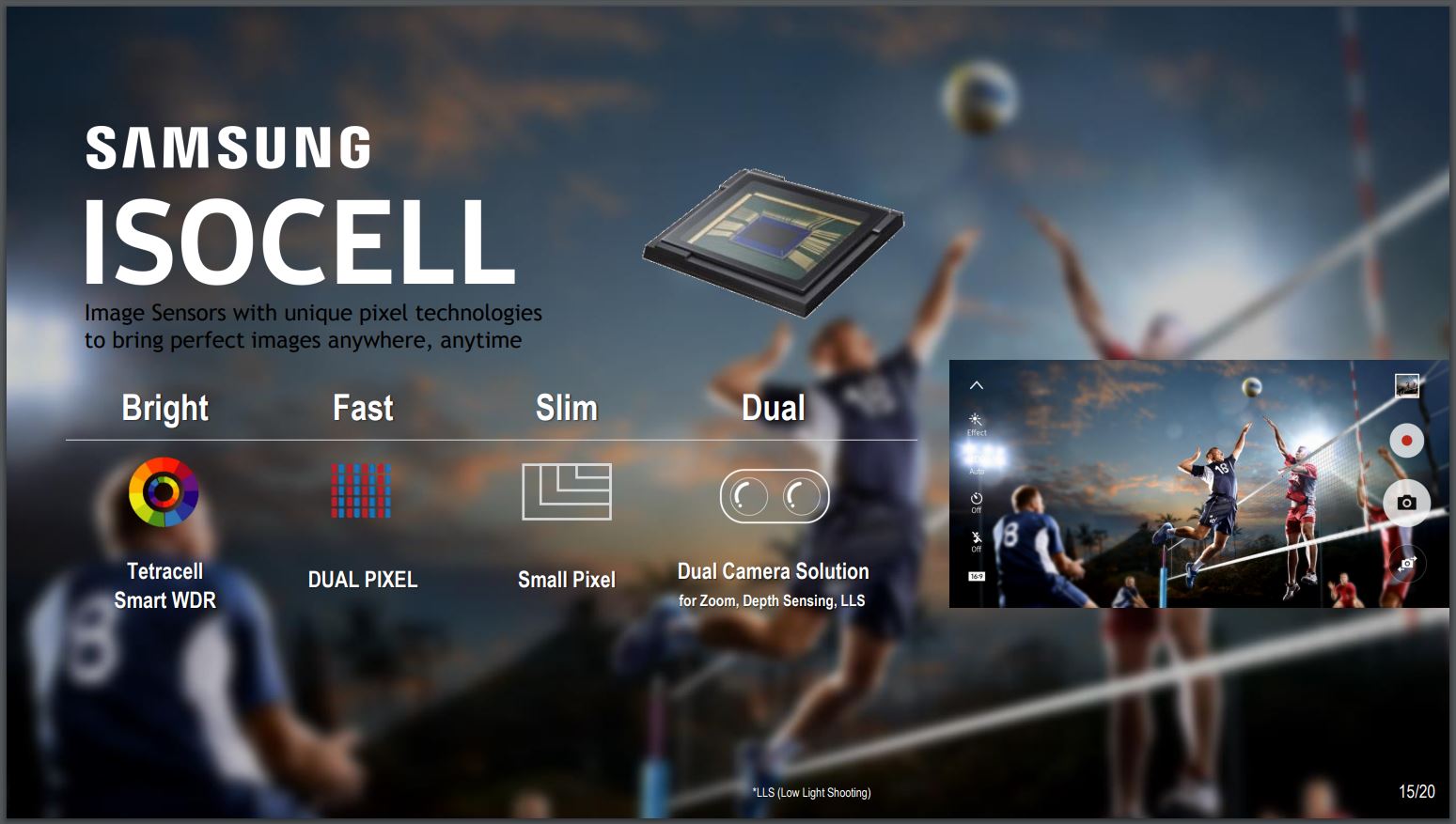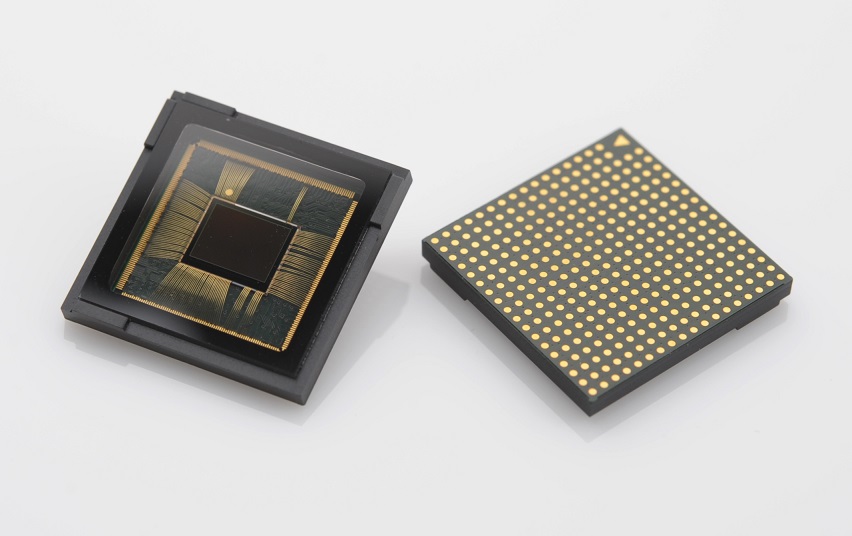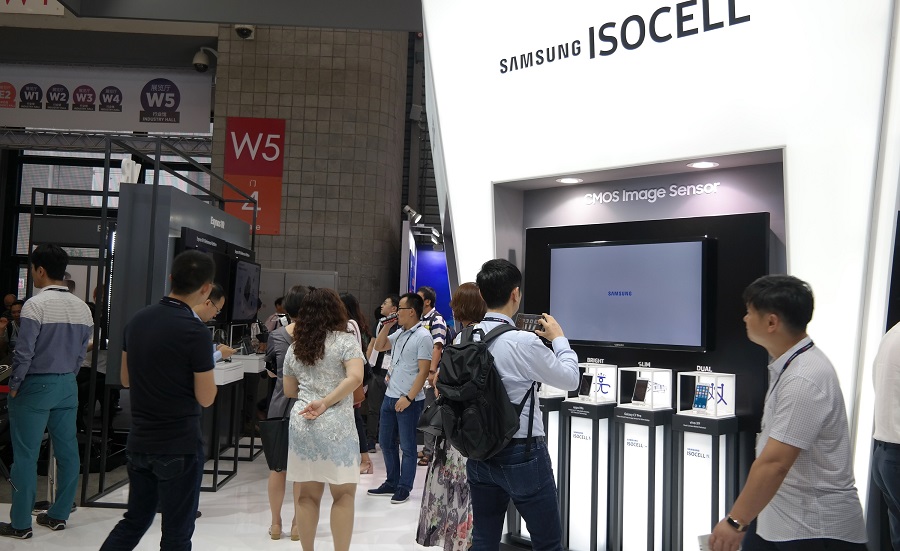At MWC Shanghai 2017, Samsung showed off its new range of the company’s own ISOCELL camera sensors, giving them individual sub-brands for easier recognition. One of the four, sub-brands, makes for a very interesting observation at Samsung’s future smartphones.
Samsung is taking a rather unusual move to sub-branding the ISOCELL camera sensors, but the company claims this is a response to specific market demands. The sub-brands are ISOCELL Bright, Fast, Slim, and most interestingly, Dual.
Let’s start with the first three. ISOCELL Bright sensors deliver bright and sharp images with high color fidelity and reduced noise in low light environments. ISOCELL Fast sensors provide fast autofocus onto still or moving objects even when dark. Meanwhile, ISOCELL Slim sensors adopt the smallest pixel sizes available in the market at 0.9-1.0um, yet produce high quality images for the slimmest devices.
Lastly, ISOCELL Dual sensors can be mixed and matched in various combinations on consumer devices to bring about features demanded in the latest dual camera trend.
Samsung’s Galaxy S8 series ship with a single 12MP rear camera sensor, at a time when Apple and Huawei, two of its biggest rivals, have begun employing dual-camera setups on their flagship smartphones. While the Galaxy S8 camera remains one of the best in the market, it lacked the optical zoom advantage on the iPhone 7 Plus, or the monochrome sensor on the Huawei flagships.
That may all change as early as the next Samsung flagship, however. At the company’s MWC Shanghai booth, Samsung revealed a dual-camera setup consisting of two 13MP sensors: one RGB, and the other monochrome – similar to Huawei’s approach. However, the pixel count is symmetrical here, and the pixels are larger at 1.12μm.
Would that mean there would be no optical zoom feature for ISOCELL Dual? In a presentation slide for Samsung’s System LSI subsidiary for investors, the company claims that ISOCELL Dual sensors have zoom, depth sensing (useful for Portrait Mode, for example), and also for low-light shooting (LLS).
Given that the sensors can be mixed and matched, as the company states, it would appear that they could be customised to fit the requirements of the clients (Samsung System LSI is a subsidiary of Samsung Electronics, which means they also serve other customers such as Meizu, which uses ISOCELL camera sensors and Exynos processors).
Whether Samsung decides to opt for a dual-camera setup with RGB and monochrome sensors, or two RGB sensors with different focal lengths is still a mystery. That said, a report from The Korea Herald claims that the Note 8 will have a 12MP + 13MP setup with different focal lengths, allowing optical zoom up to 3x.
(Source: Samsung Newsroom)
Follow us on Instagram, Facebook, Twitter or Telegram for more updates and breaking news.






